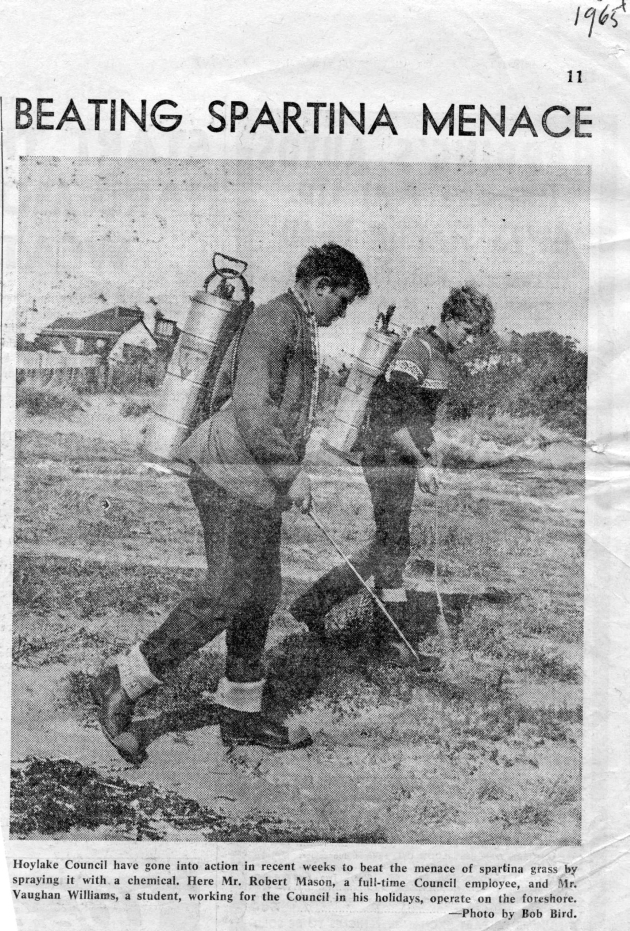
We’ve previously discussed the spartina grass that is growing strongly down on Hoylake beach. If you don’t know what it is, here’s a photo of it taken last September.
It’s not a new problem though as the above press cutting from 1965 indicates. Vaughan Williams (Chairman, Hoylake Community Centre) sent me the article in which he is pictured spraying the spartina grass with a chemical. Vaughan says:
…a photo from a 1965 Hoylake News and Advertiser of myself and colleague doing holiday job for the old HBC spraying the ‘spartina menace’ which was then beginning to colonise the beach between Red Rocks and West Kirby – didn’t do any good there either – particularly as they frequently dropped us there at high tide as I recall! No idea what we were spraying – probably highly toxic.
Much of that area mentioned between Red Rocks and West Kirby is now a nature reserve called Red Rocks Marsh (more information), including a sectioned-off area for the rare natterjack toads. You can use the board walk to walk (or run as I sometimes do – it’s not all boards by the way) between Red Rocks and West Kirby beach. You can also turn off the board walk onto the public footpath that takes you across the golf course to Pinfold Lane, just off Meols Drive.
So the spartina grass was a problem 45 years ago; evidently it is stubborn stuff.
Interesting to see that! When the spraying didn’t work, they used huge specialised machines (possibly turf cutting machines?)to remove the grass on that part of the beach. That didn’t work either.
I was a veteran of the Spartina digs in the ’70s organised by the Hoylake sailing club. I now realise Spartina can’t be beaten since it is a symptom not a cause of the siltation process! As you can see between Red Rocks and West Kirby if you let it grow it rapidly gives way to sand dunes. So let’s not fight it but see it as a first step in the process of dune formation and a return to a more natural Hoylake beach.
where are the dunes at Parkgate?
The natural ecosystem in Hoylake, and the entire North Wirral coast from West Kirby to Wallasey, is sand dunes which is totally different to that in Parkgate and the middle to upper estuary.
As sand levels keep rising it is human intervention – sea walls and sand management / removal – that is the only thing preventing dune formation. By Red Rocks you will see that the dunes have extended seaward over recent years, apparently one of the few places in Britain where this is so. Take a walk and you will see that the sand builds up rapidly on top of a salt marsh strip and is colonised by dune vegetation which traps yet more sand to build new embryo or fore dunes.
Hoylake promenade would very quickly disappear under dunes if the windblown sand was not removed.